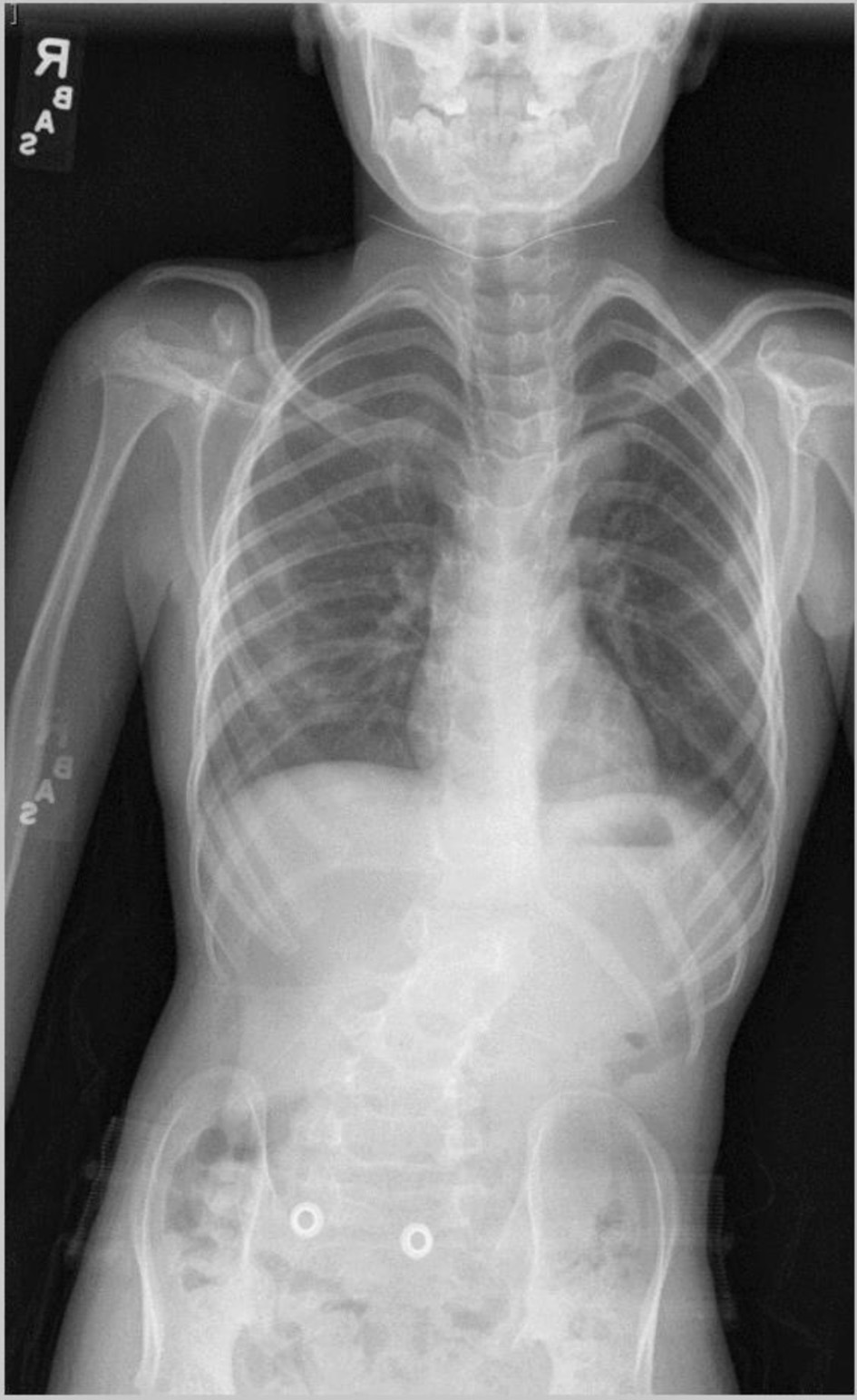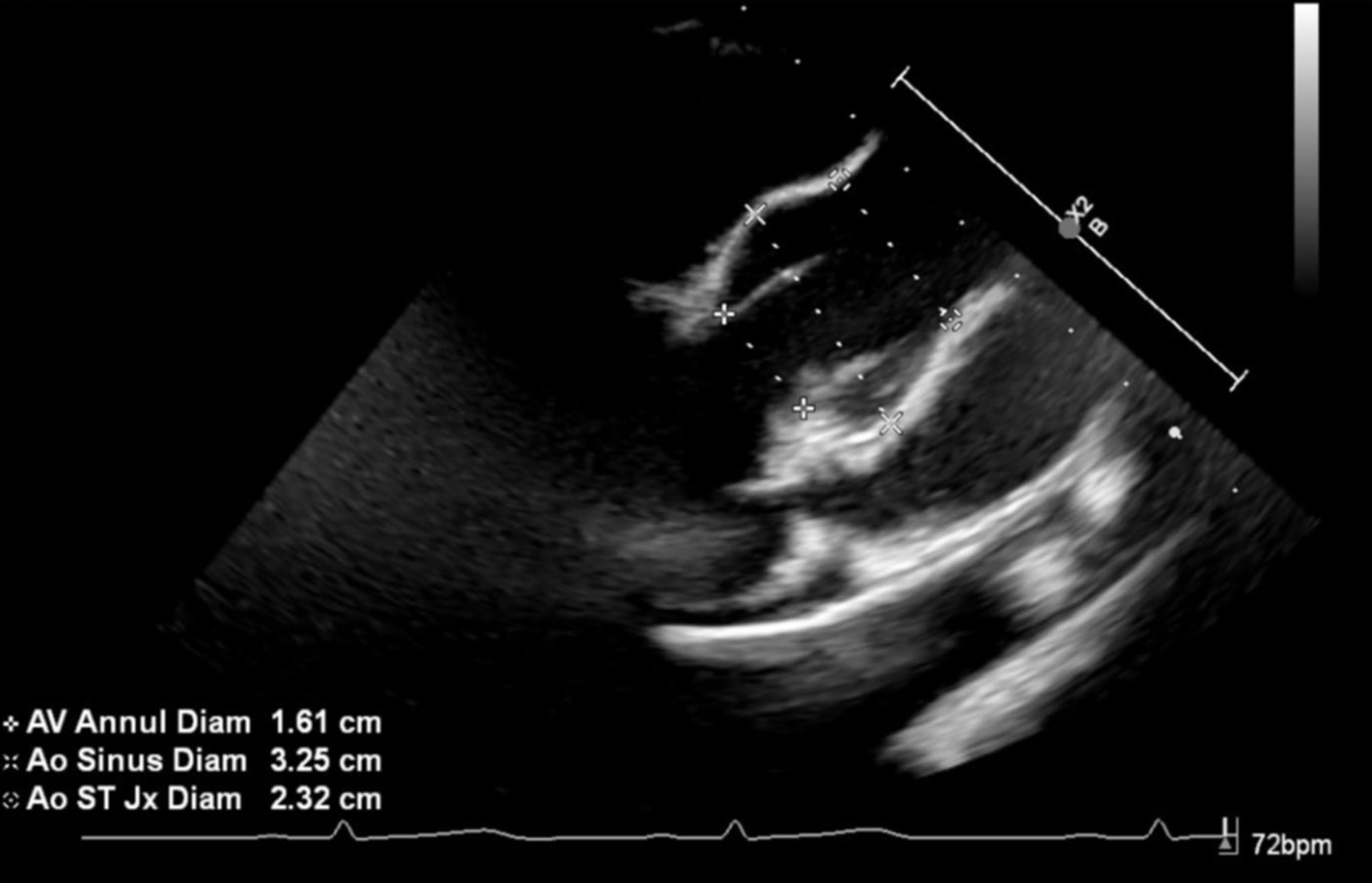
Figure 1. Preoperative vertebral radiograph showing scoliosis.
| Journal of Medical Cases, ISSN 1923-4155 print, 1923-4163 online, Open Access |
| Article copyright, the authors; Journal compilation copyright, J Med Cases and Elmer Press Inc |
| Journal website https://jmc.elmerpub.com |
Case Report
Volume 16, Number 10, October 2025, pages 421-426
Perioperative Care of a Pediatric Patient With Beals Syndrome
Figures


Tables
| Author and reference | Patient demographics, surgical procedure, and case summary |
|---|---|
| DL: direct laryngoscopy; ETT: endotracheal tube; LMA: laryngeal mask airway; TMJ: temporomandibular joint. | |
| Browder et al [10] | A 4-year-old, 14.2 kg boy for bilateral removal of the coronoid process. Inhalation induction, spontaneous ventilation. Failed blind nasal intubation attempts. Successful fiberoptic guided nasal intubation. |
| Vaghadia et al [11] | Case series of six patients, ranging in age from 12 months to 32 years old, requiring multiple anesthetics for various orthopedic or orthognathic procedures. All noted to have limited mouth opening ± micrognathia. Inhalational induction with spontaneous ventilation. Two procedures cancelled, one when patient had emesis with aspiration and the other when endotracheal intubation failed. When indicated, cases were performed by mask. ETT intubation accomplished by blind nasal, fiberoptic or direct laryngoscopy (limited details for this patient). |
| Geva et al [12] | A 12-year-old girl for lower extremity orthopedic procedure. Intravenous induction and administration of NMBA (succinylcholine). Bag-valve-mask successful and endotracheal intubation with DL. |
| Seavello et al [13] | An 11-year-old girl for TMJ arthroplasty. Limited mouth opening (5 mm). Inhalational anesthetic and spontaneous ventilation during fiberoptic intubation, which led to epistaxis. Endotracheal intubation using retrograde guidewire-assisted fiberoptic intubation. |
| Nagata et al [14] | A 6-year-old boy for derotational varus osteotomy and a 4-year-old girl female for bilateral posteromedial release. In both patients, difficulty in tracheal intubation due to limited mouth opening. Spontaneous ventilation and adequate bag-valve-mask ventilation. Blind placement of ETT using DL after administration of NMBA with grade III view. |
| Kumar et al [15] | A 4-year-old, 15 kg girl for lower extremity contracture releases. Inhalational induction with spontaneous ventilation. Limited visualization with DL. Blind endotracheal intubation through LMA. |
| Narseen et al [16] | A 2-month-old for right inguinal herniorrhaphy. Cleft palate, micrognathia, restricted mouth opening, and neck contractures lead to anticipation of difficult intubation. Inhalational induction with spontaneous ventilation. Intubation using indirect videolaryngoscopy. |
| Vazquez-Colon et al [17] | A 6-year-old male for an MRI under general anesthesia Inhalational induction with spontaneous ventilation. Nasal fiberoptic intubation of the trachea. Manual jaw thrust resulted in a grade 1 view. |
| Dada et al [18] | A 36-year-old woman for repair of pectus excavatum. No concerns with airway examination or endotracheal intubation. Due to severity of chest wall and kyphoscoliosis, there were perioperative concerns of impact on respiratory and cardiovascular function. |
| Chandramohan et al [19] | A 6-year-old, 31 kg boy for scoliosis surgery. Endotracheal intubation using indirect videolaryngoscopy. Tortuous radial artery so ulnar artery cannulate. |
| 1. Airway involvement leads to difficulties with airway management and endotracheal intubation |
| a. Limited mouth opening |
| b. Trismus |
| 2. Cardiac involvement |
| a. Congenital heart disease most commonly involving the aortic arch or atrial/ventricular septal defect |
| b. Anecdotal report of cardiomyopathy |
| 3. Respiratory embarrassment and involvement from kyphoscoliosis |
| a. Restrictive lung disease |
| 4. Skeletal involvement |
| a. Kyphoscoliosis |
| b. Pectus excavatum |
| c. Arachnodactyly |
| 5. Positioning concerns related to kyphoscoliosis and multiple congenital joint contractures |
| 6. Difficult vascular access related to joint contractures |